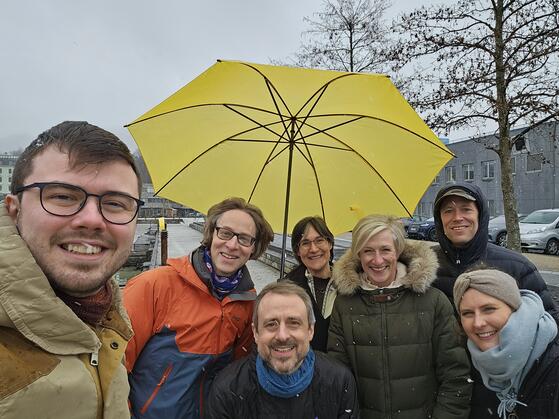ISOSCAN stands for “Isotope-aided assessment and forecasting of hydroclimatic extremes in Scandinavia with stakeholder co-design”. The ISOSCAN project is an interdisciplinary research project funded in the Water4All funding scheme.
Extreme snowpacks are closely linked to extreme hydro-meteorological events. Large snow cover, for example, can be related to for example flash-floods during rain-on-snow events, while on the opposite low snowcover can lead to droughts. Both extremes have major socio-economic impacts. There is a lack of more solid evidence on the causes and impacts of extreme seasonal snow cover on a Scandinavian scale, and beyond. Uncertainties arise from the water amount and variability of the snowpack, and from the lack of suitable calibration data for hydrological models, in particular for hydrological extremes. Being tuned to the present, many current models will not be able to adequately represent future extremes. Water isotopes in precipitation and the snowpack have a large, but hitherto barely exploited potential to improve estimates of the water amount and physical processes contributing to runoff.
The overall aim of ISOSCAN is to advance forecasts of hydroclimatic extremes across Scandinavia from novel water resource assessment and model constraints, using new water isotope data from non-traditional sources, co-designed with citizen scientists and stakeholders.
ISOSCAN will realize the overall aim through 4 specific objectives:
- by developing a scalable, effective citizen science framework that involves recreational nature users, including tourists and locals, to overcome the lack in spatiotemporal isotope data in Scandinavia;
- by obtaining spatially and temporally resolved water isotope data obtained from a range of sources, from literature to fieldwork using a citizen science framework during winter and precipitaiton, soil, groundwater and water bodies during summer across Scandinavia;
- by utilizing the novel stable water isotope dataset to improve estimates of the snowpack, and physical process representations in a hydrological model; and
- by disseminating co-designed outcomes and the improved hydrological model capability.
This work is expected to lead to a better hydrological process understanding to stakeholders, contributing to mutual learning between citizens and scientists, as well as contributing to stewardship and behavioural changes. Thereby, ISOSCAN contributes towards preparedness against hydroclimatic extremes, such as years with extreme low or high seasonal snow packs, that will have widely differing consequences for stakeholders, including locals, tourists, and water resource managers.

